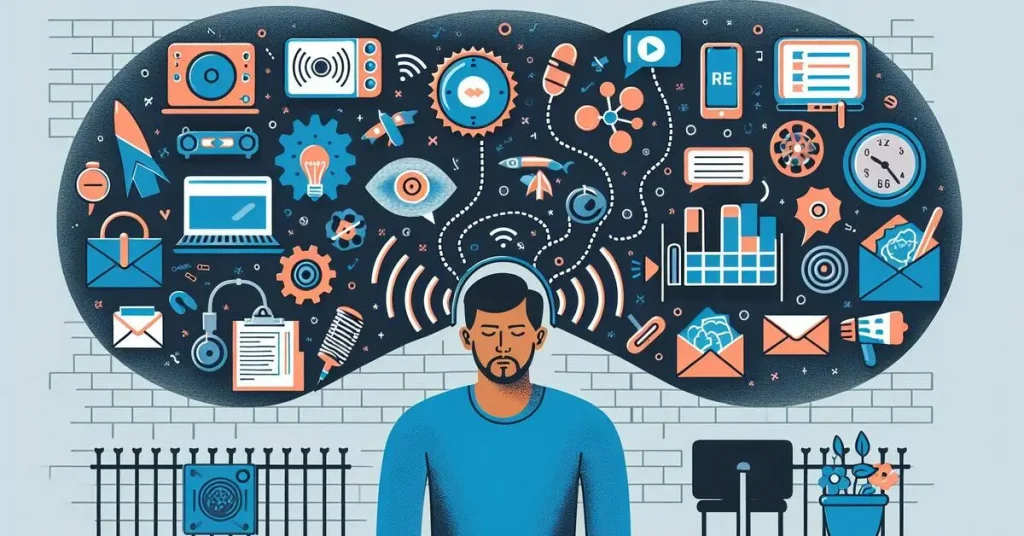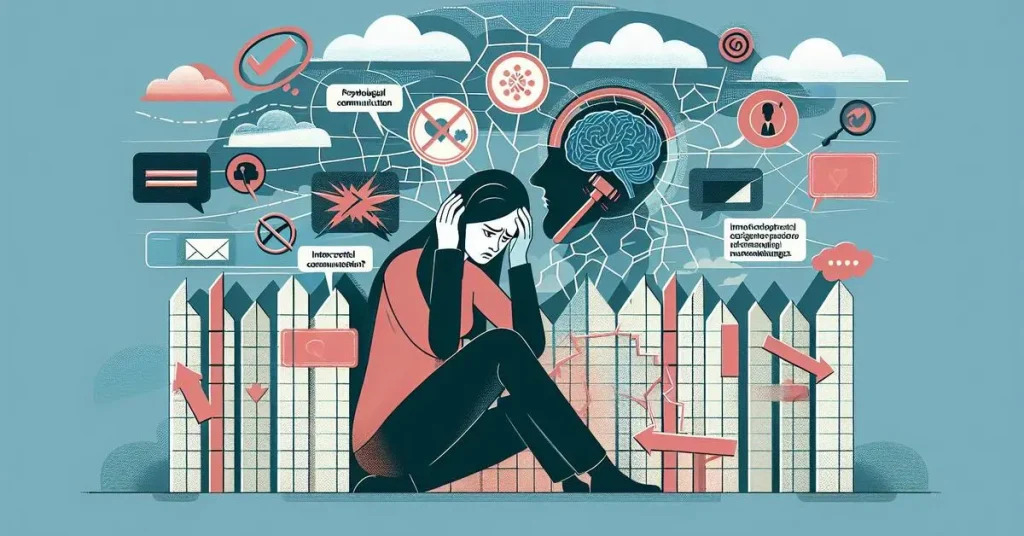Navigating the complex landscape of workplace communication, I’ve come to realize that understanding receiver barriers is crucial for effective dialogue. These barriers, often overlooked, can significantly hinder the flow of information and impact the overall productivity and harmony in an organization.
Receiver barriers to communication include distractions or preoccupations that hinder the receiver’s ability to comprehend messages effectively, as well as differing levels of understanding or language proficiency that may impede reception.
From emotional blockades like mistrust and fear to the nuances of language and personal interpretation, receiver barriers are as diverse as they are challenging. As we delve deeper into this topic, I’ll share insights on how to identify and overcome these obstacles, ensuring that your message not only reaches its destination but is understood as intended.
Contents
Definition of Receiver Barriers to Communication
When we dive deep into the anatomy of effective communication, it’s crucial to understand the hurdles at the receiving end. Receiver barriers in communication refer to the obstacles that prevent recipients from accurately understanding, interpreting, or responding to the messages conveyed to them. These hurdles can range from physical distractions to psychological conditions, all of which play a significant role in communication breakdowns. Let’s explore two primary receiver barriers: lack of attention and language barriers.

Lack of Attention
Attention is the bedrock of effective communication. However, in today’s fast-paced world, maintaining undivided attention is often a challenge. Distractions are a common barrier to effective listening. Whether it’s the pings from a smartphone, background chatter, or internal preoccupations, they can all lead to partial or complete loss of the message.
For instance, multi-tasking has become a norm in most workplaces. Yet, research consistently indicates that dividing one’s focus usually results in diminished comprehension. When the receiver is not fully engaged, key details can be missed, leading to misunderstandings or errors. Creating an environment conducive to active listening and minimizing distractions can mitigate this barrier, ensuring a smoother communication flow.
Language Barriers
Language barriers extend beyond just speaking different languages. They encompass the entire spectrum of semantic barriers—misinterpretations arising from unclear message formatting, complex vocabulary, jargon, regional dialects, or inadequate explanation. Even when the sender and receiver speak the same language, nuances in word choice and sentence structure can lead to misconceptions.
Consider a scenario where a manager communicates tasks using technical terminology unfamiliar to new employees. The employees might hesitate to seek clarification, leading to productivity lags. It’s vital, therefore, for the sender to adapt their language to the receiver’s level of understanding, ensuring that the message is not only delivered but effectively comprehended.
Overcoming these barriers requires a keen awareness of the audience’s needs and the context of the communication. By fostering an environment that prioritizes clear, scaffolded exchanges, we can bridge the gap between message sent and message received, paving the way for more effective interactions in any setting.
Prejudices and Stereotypes
One of the most pervasive psychological barriers is the presence of Prejudices and Stereotypes. These preconceived notions about people or situations can drastically skew the interpretation and reception of messages. For instance, if I enter a conversation with an ingrained stereotype about the other person’s background, I’m likely to hear what I expect rather than what’s actually being communicated. This selective interpretation is a formidable barrier to authentic communication, leading to misunderstandings that could have been easily avoided.
It’s essential to recognize and challenge our own biases. I’ve learned that by actively seeking to understand the unique perspectives of others, without letting stereotypes cloud my judgment, I open the door to richer, more productive dialogues.
Psychological Barriers

When diving deeper into understanding receiver barriers to communication, it’s crucial not to overlook the psychological factors at play. These barriers, stemming from the mind’s intricate workings, significantly influence how messages are received and interpreted. I’ve found that by addressing these psychological barriers head-on, we can pave the way for more effective and meaningful interactions in both personal and professional settings.
Emotional Blocks
Another significant psychological hurdle involves Emotional Blocks. Emotions play a crucial role in how we process information, and strong emotions—be it anxiety, anger, or excitement—can easily distort the message being received. For example, if I’m feeling particularly stressed about an upcoming deadline, my ability to fully grasp the nuances of a colleague’s instructions might be compromised. Similarly, if I’m too excited about a piece of news, I might miss critical details in the conversation.
The key to navigating emotional blocks lies in self-awareness and regulation. By acknowledging my current emotional state and understanding its potential impact on my communication, I can take steps to ensure that I’m truly listening and comprehending what’s being shared. This might mean taking a moment to calm down or consciously shifting my focus back to the present conversation.
In both cases, whether dealing with prejudices and stereotypes or confronting emotional blocks, the solution begins with introspection. Recognizing the invisible barriers we carry within us is the first step toward dismantling them, thus enhancing the clarity and effectiveness of our communication.
Physical Barriers
When we talk about the hurdles in communication, it’s essential not to overlook the role of physical barriers. These are tangible, often overlooked obstacles that can significantly hinder our ability to send and receive messages effectively. Let’s delve deeper into some of these barriers to understand their impacts better.
Noise
One of the most prevalent physical barriers I’ve come across is noise. Noise refers to any unwanted sound interfering with the communication process. It’s not just about the volume; even a low buzz can be distracting enough to disrupt the flow of information. In a workplace, this could stem from ongoing construction, loud chatter from colleagues, or the hum of office equipment. Noise creates a layer of interference that makes it challenging for the receiver to grasp the intended message fully. This barrier is particularly problematic in environments where clarity and precision are paramount, such as in medical facilities or in high-stakes business negotiations.
I’ve observed firsthand how noise can lead to misunderstandings and errors. When important details are lost in the cacophony, the consequences can range from minor annoyances to significant operational setbacks. It’s crucial, therefore, to implement noise reduction strategies, such as soundproofing meeting spaces, using noise-cancelling devices, or simply choosing a quiet room for discussions that require undivided attention.
Distance
Another significant physical barrier is Distance. The farther away the sender and receiver are from each other, the more challenging it becomes to communicate effectively. In today’s globalized world, distance often separates team members, causing a reliance on technology to bridge the gap. While modern tech offers various tools to facilitate long-distance communication, such as video conferencing and instant messaging, these solutions are not without their own set of challenges.
Distance can dilute the personal connection and immediacy that face-to-face interaction provides. Non-verbal cues, such as body language and facial expressions, play a crucial role in conveying messages and understanding intent. These subtleties can be lost or misinterpreted when communication happens over a digital medium. Furthermore, different time zones can complicate scheduling, leading to delays in message delivery and response. To mitigate the effects of distance, it’s essential to leverage technology effectively, ensuring that the chosen communication channel suits the context and needs of the interaction.
Recognizing and addressing physical barriers like noise and distance is crucial for enhancing the efficacy of communication.
Personal Barriers
When diving into the complexities of workplace communication, I’ve found that personal barriers often stand tall as formidable obstacles to effective interaction. These barriers, deeply rooted in our individual characteristics and experiences, can significantly obstruct the flow of information between senders and receivers.
Lack of Listening Skills
In my observation, a primary barrier that frequently goes unnoticed is the lack of listening skills. Active listening is essential for understanding the message fully and responding appropriately. However, many individuals find themselves either passively listening or, worse, not listening at all. This leads to a breakdown in communication where key information is missed, and misunderstandings become commonplace.
Active listening isn’t just about hearing the words; it’s about engaging with and processing the information being communicated. This requires a conscious effort to listen, understand, and then react. Whenever I’ve focused on actively listening during conversations, I’ve noticed a significant improvement in my ability to comprehend the message, demonstrating the critical role listening skills play in overcoming personal barriers.
Lack of Understanding
Another critical personal barrier is the lack of understanding, which often stems from pre-existing perceptions, biases, or a sheer divergence in backgrounds. People’s experiences, education, and cultural backgrounds influence how they perceive messages. If I’m communicating with someone whose background is vastly different from mine, it’s crucial that I adapt my language and delivery to bridge the gap in understanding.
This lack of understanding can also be attributed to complex or technical language that the receiver might not be familiar with. In my work, I’ve learned that simplifying my language and avoiding industry jargon (unless I’m certain the receiver understands it) minimizes misunderstandings and enhances clarity. Clarity is king in effective communication.
Each of these barriers presents its own set of challenges in the workplace, emphasizing the need for tailored approaches to overcome them. By fostering an environment that prioritizes active listening and understanding, we can start to dismantle these personal barriers, paving the way for more effective and meaningful communication.
Conclusion
Understanding and addressing receiver barriers in communication is crucial for maintaining a productive and harmonious workplace. It’s about more than just talking; it’s about ensuring our message is received and understood as intended. By fostering an environment that promotes active listening and adapting our language for clarity, we can break down emotional, language, and psychological barriers. Moreover, tackling physical and personal barriers by leveraging technology wisely and enhancing our listening skills can significantly improve our interactions. Let’s commit to recognizing and overcoming these barriers within ourselves and our organizations to ensure our communication is as effective as possible.
Boko Ducky has over 10 years of experience in helping individuals and organizations improve their communication skills.



